If you spend most of your time welding, you do face some risks that you have to be aware of. For starters, your hands are likely to constantly be exposed to the 10,000 degrees of hot molten metal and UV radiation. In fact, burns are considered to be the most common health hazards or injuries for welders. This means that you are going to need to take safety precautions when welding, which is where welding gloves come in.
Welding gloves are not just like your ordinary gardening or driving gloves. They are specifically made using heavy leather material, which is both smooth and tough enough to prevent the excess heat from penetrating and burning your skin. Safe to say, not all are made of the same quality. The gloves are cut-resistant and sturdy enough to take on the heat. They come in different designs, material, flexibility, level of heat resistance as well as durability, all of which are important in achieving the maximum level of protection.
So if you are one to weld for long hours, you’ll need the best welding gloves that offer the most comfort. To help you make the most informed selection, we have compiled some cool picks that will prove a treasure!
Top 9 Welding Gloves Of 2020 Reviewed
1. US Forge 400
 Welding Gloves For Mig Welding
Welding Gloves For Mig Welding
These bright blue welding gloves from US Forge are one of the best in the market for three reasons. One, they are extremely comfortable due to the cotton lining. Two, these are lock-stitched for added durability. And three, the top-grain leather is soft and supple to provide dexterity.
Pros:
- Comfortable
- Affordable
- Durable
Cons:
- One-size-fits-all is a bit on the large size
- Not for overhead or stick welding
- Bulky
2. Lincoln Electric Traditional MIG/Stick Welding Glove
 Welding Gloves For Mig Welding
Welding Gloves For Mig Welding
Made from split cowhide leather, these heat and flame resistant welding gloves from Lincoln are perfect for MIG and Stick welding. It features full sock lining for comfort, welted seams with Kevlar stitching for increased durability, and a cuff for added protection.
Pros:
- Good material and stitching
- Attractive design
- Comfortable
Cons:
- Fingers are all the same size; lacks dexterity
- Size may be too large for some users
- Some users reported the liner coming out whenever the hand is pulled out
3. Hobart 770440
 Welding Gloves For Mig Welding
Welding Gloves For Mig Welding
The Hobart 770440 welding gloves are made from premium natural grain leather with protective knuckle patches, a padded palm, and a pigskin cuff and backhand. What makes these gloves stand out is the balance it has between performance and protection.
It is thick enough, especially with the reinforced portions at the back, knuckles, and palm, to provide good insulation and protection from burns. But it is not so thick that you lose dexterity.
Pros:
- Well-insulated
- Decent dexterity for MIG welding
- Good quality leather
Cons:
- Sizes run a bit small
- Some users have reported durability issues
4. Caiman 1878-5
 Welding Gloves For Stick Welding
Welding Gloves For Stick Welding
The Caiman 1878-5 is a 21-inch deerskin welding glove that is designed specifically for overhead, plasma, and stick welding. It was also specifically designed to match the natural shape of the human hand and fingers to provide proper finger alignment, comfort, and dexterity.
It serves to provide protection all the way up to your forearm. All the pieces of leather are stitched together with 100% Kevlar thread. And there’s even a leather patch along the wrist for added protection and leather reinforcements for increased durability.
Pros:
- Comfortable
- Conforms to the natural shape of the hand
- Perfect for overhead, plasma, and stick welding
Cons:
- Some users have reported that the stitching fell apart rather quickly
- Can get hot inside the gloves due to thickness
- These one-size-fits-all gloves do not fit extra large hands
5. NKTM Leather Welding Gloves
 Welding Gloves For Mig Welding
Welding Gloves For Mig Welding
Made from premium cowhide leather, these 16-inch NKTM leather gloves maintain a delicate balance between protection, comfort, and durability. It features a reinforced wing thumb design for flexibility; cotton liner and canvas cuff for comfort, sweat absorption, and heat resistance; and split leather, reinforced palm for added protection and durability.
Pros:
- Comfortable
- Affordable
- Good dexterity
Cons:
- Poor stitching
- Strong chemical smell
- Not for stick welding
6. Steiner 21923-L
 Welding Gloves For Mig Welding
Welding Gloves For Mig Welding
The Steiner 21923-L is made from select shoulder split cowhide leather and features a foam insulated back, full cotton lining, a reinforced thumb strap, and fully welded seams. This comes in two sizes – large (23 inches) and extra large (18 inches).
Pros:
- Heavy duty gloves
- Over-the-elbow protection
- Soft and flexible fit
Cons:
- Poor customer service
- No option for small hands
- Stitching is not great
7. Better Grip Leather Welding Gloves
 Welding Gloves For Mig Welding
Welding Gloves For Mig Welding
The fact that these are called Better Grip Leather Welding Gloves is not a contradiction. In fact, the leather material from which they are made is both heat resistant and with a good grip. Also, it is highly durable and guaranteed to provide your hands with better protection against heat and the effects of handling metals while welding.
With these gloves, you are assured of extra flexibility, thanks to the wing thumb. The palm side does not feature any seams. Thus, you will avoid unnecessary fatigue and obstruction that usually results from wearing gloves. The best thing about these gloves is the Kevlar stitching, which strongly reinforces them and protects you against welding heat.
Pros:
- Made from durable shoulder split leather
- Has a flexible wing thumb
- Features a reinforced Kevlar stitching
Cons:
- Grey color prone to stains
- Doesn’t have many reviews
- Available in only one size
8. John Tillman and Co 50L
 Welding Gloves For Tig Welding
Welding Gloves For Tig Welding
The John Tillman and Co 50L is constructed out of top grain cowhide leather with split leather reinforcements on the palm and back, all sewn together using Kevlar® thread. The gloves feature a fleece lining and a seamless forefinger.
One feature that is unique with this pair is the elastic on the back of the glove, around the wrist. This creates a more secure fit. These John Tillman and Co welding gloves provide good dexterity and sufficient protection.
Pros:
- Good dexterity
- Comfortable
- Good heat protection
Cons:
- Can get really warm inside the gloves (body heat)
- Inner lining tends to come off
- Not for overhead welding
9. Miller 263343 Arc Armor MIG/Stick Welding Glove
 Welding Gloves For Mig Welding
Welding Gloves For Mig Welding
Miller 263343 Arc Armor MIG/Stick Welding Glove is made from premium grade cowhide and pigskin leather with reinforced double layer patches on the palm and back for added protection. The 100% wool lining provides flame resistant insulation while the pre-curved fingers plus wing thumb design provides an ergonomic fit as well as dexterity.
Pros:
- Comes in various sizes – S, M, L, XL
- Extremely comfortable
- Well-insulated
Cons:
- The extra padding on the palm makes it difficult to grip the gun for long periods of time
- Sizes are smaller than expected
- Can get a little warm inside (body heat)
Choosing The Best Welding Gloves – The Ultimate Buying Guide
Welding gloves are a must-have, not a nice-to-have kind of gear when you’re dealing with that much heat. Not to mention sparks and flying metal fragments. And there’s quite a number that you can choose from. However, not all of them will provide you with everything you need to do your welding safely.
So, how does one determine what makes a certain pair the best? Well, if you want a really good pair of welding gloves, you need to look at three things: protection, performance, and price.
How Much Protection Do I Need?
Obviously, you’re buying welding gloves for protection. You want to ensure you don’t burn your hands while you’re working. Now, there are different types of welding that produce different levels of heat. Obviously, the more heat you are exposed to through your process, the more insulation you’ll need. And the level of protection you get will depend on the type of leather the gloves are made of.
Elkskin is the most resistant to heat, flame, and abrasion. Cowhide is also a durable material that provides heat resistance and flame resistance even at high temperatures. Deerskin provides the most comfortable fit as well as a great deal of dexterity. Thick deerskin is perfect for resisting high temperatures as well. One added benefit of this kind of leather is that it conforms to your hand’s shape over time, making it fit even more comfortable.
Pigskin is a thinner material that offers oil and weather resistance. It is not as good as the previous three at heat resistance. Goatskin is also oil and weather resistant (though pigskin is best). It is also incredibly light and flexible which makes it a favorite of TIG welders who need to pick up and feed the filler metal rods. See this list for garage cabinets by a mechanical guide.
Split Leather or Top Grain?
Aside from the type of leather based on what it’s made of (i.e. deerskin, cowhide, elk), you should also look at two other category types – split leather and top grain. When the hide is first removed from an animal, it’s very thick and needs to be “split” into two layers – a top layer called the “top grain” and the bottom layer called the “split leather.”
Split leather is more commonly known as suede. Now, the advantage of this type is that it has a high level of abrasion resistance and is more water-resistant than grain leather. It’s also more resistant to punctures. Grain leather, on the other hand, is smooth and shiny, providing better control and sensitivity.
Now that you know how much protection is provided for by the material used in making the glove, you need to ascertain how much heat do you need protection from. TIG welding exposes you to less heat and less splatter. And you need a lot of dexterity and control to perform precise welding projects. This is why you typically find goatskin in the most popular welding gloves for TIG welders. And since these are less heat resistant, some feature wool or cotton lining for additional protection.
MIG welding produces a little bit more heat than TIG welding plus there’s spatter to consider. This means that you’ll need to get gloves that are made out of top grain cowhide or deerskin. Both of these provide a good balance between protection and flexibility. Some welders use goatskin gloves that feature fleece lining. For stick welding, you’ll need heavy-duty gloves that provide you with the best heat protection. Ones that are made out of top-grain elk skin, pigskin, and split cowhide leather are your best options.
What about Performance?
There’s really no way to accurately judge a glove’s performance before you use it. However, you can still check the quality of the build as a sign. And some added features will let you know how well the glove will perform in its intended purpose.
For example, some gloves such as the Caiman 1878-5 and the Lincoln Electric Traditional MIG/Stick Welding Glove feature Kevlar stitches which adds durability to the gloves. Some gloves such as Co 50L provide extra padding in the palm and the back of the hand makes it perfect for MIG welding.
These features provide additional protection to the hand that stabilizes the welding torch. Some gloves can reach past the elbow to provide protection to the forearm as well while others feature a strap that can be used to ensure the gloves never fall off. If you’re going to buy a new pair of welding gloves, it’s best to know a product inside out before you make the final decision. This includes consulting with fellow welders and shop owners to see what they have to say.
And the Final one is Price. What’s Your Budget?
If you’re in the market for gloves, you’ll find that there are gloves being sold everywhere. And they aren’t all that expensive either. But those $4-$5 gloves you see aren’t going to last long. A lot of good quality welding gloves are less than $50; some are even offered on sale for less than $20.
Conclusion
So buying the best welding gloves shouldn’t break the bank at all. Just keep in mind that while the price is a factor, it isn’t the number one consideration. Make sure you find a pair that fulfills the first two P’s and then you can do some comparison shopping to get the best price.


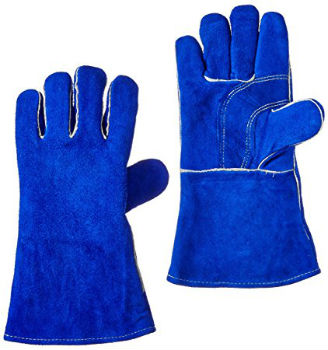
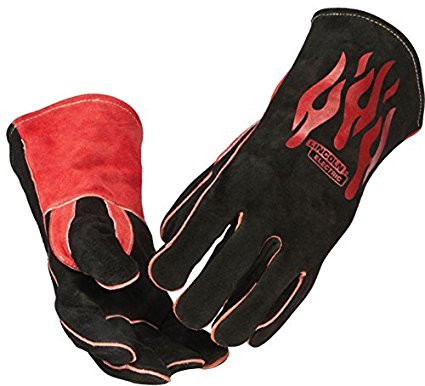
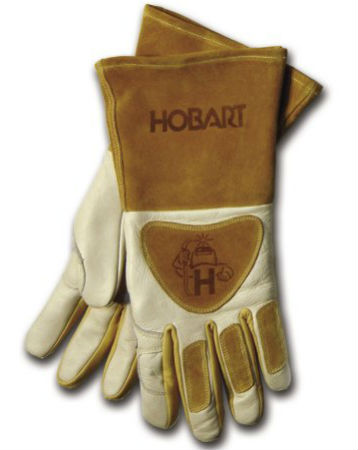
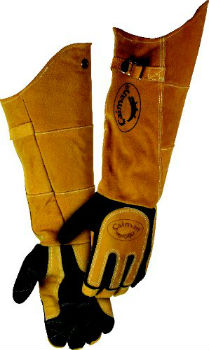
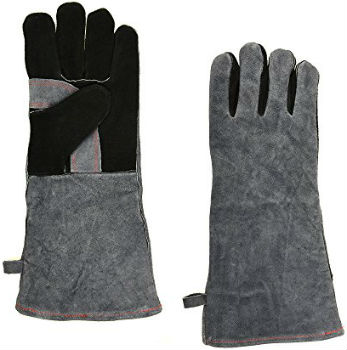
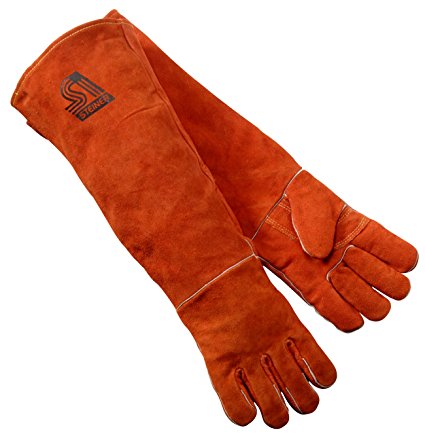
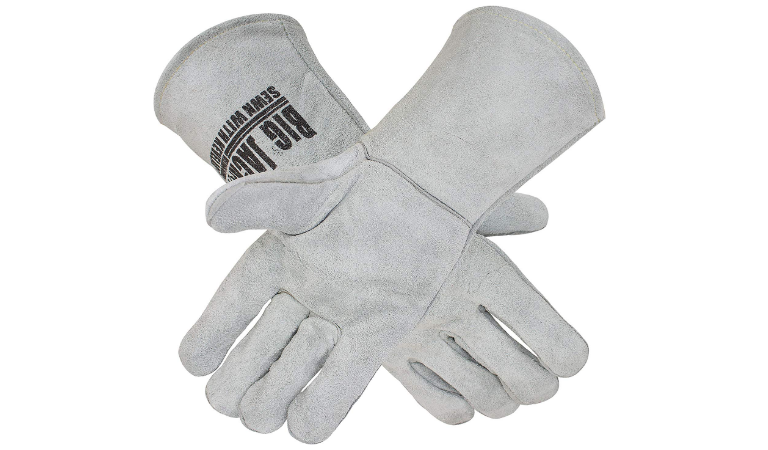
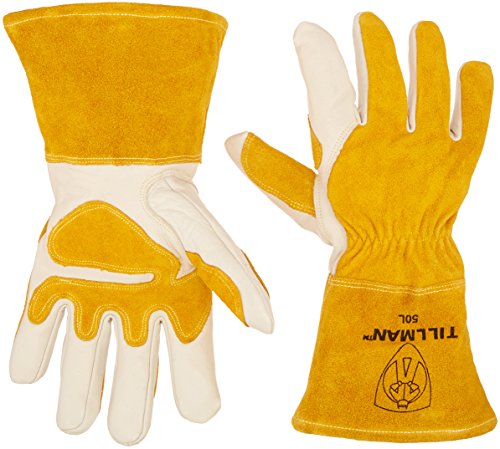
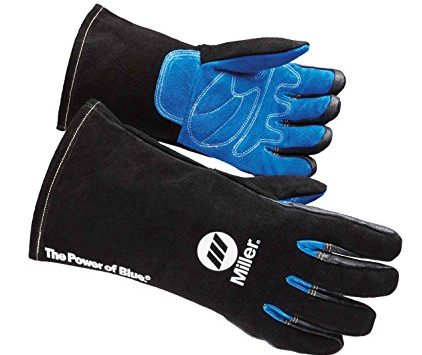

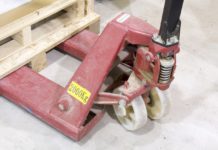
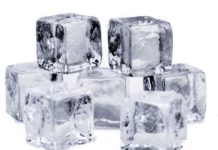
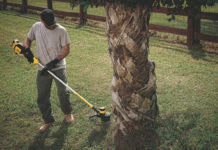







![Best Crochet Hooks for Beginners and Pros [2020 Update] best crochet books](https://www.awebtoknow.com/wp-content/uploads/2018/01/best-crochet-books-100x70.jpg)


